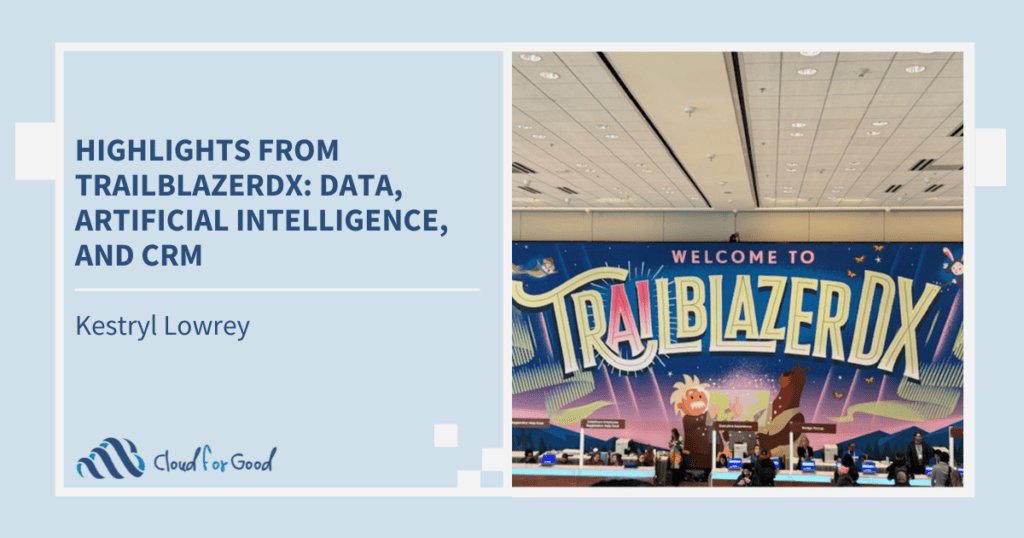Do any of these scenarios sound familiar?
“The quarterly board meeting starts in 15 minutes, and Developments’ fundraising reports don’t match Finances’ income reports!”
“I pulled an all nighter trying to get this grant proposal turned around only to find out the next day from our Programs Team that they applied for the same grant last year – I could have used last year’s application as a template and saved myself HOURS!”
“Wait, you’re telling me now that Finance said last year we didn’t qualify for this grant, so all my work on the application is wasted!?”
“One of our major donors was confused and unhappy because they were invited to two separate events on the same night by two different teams.”
“My fundraising staffers see their relationships with donors as proprietary information and guard them closely. Not only do we lose all the history with those donors when the staff member moves on, but we also miss out on the opportunity to expand those donors’ interactions with our organization.”
These are all real stories from nonprofits experiencing the silo effect.
What is the Silo Effect?
If you’ve ever driven through the American Midwest, you can’t miss the frequent placement of grain silos dotting the horizon. In the late 1980’s, organizational development expert Phil S. Ensor drew from his rural Illinois upbringing to coin the phrase “functional silo syndrome” to describe what he saw in the organizations he worked with. Here are a few common nonprofit examples:
- The Fundraising donation database and the Finance accounting database aren’t integrated. A patchwork system of spreadsheets and manual updates are used inconsistently to sync the two systems which creates confusion and misaligned data.
- A regional Fundraising staff person is unwilling to share information on the prospective donors they meet with for fear another member of the organization will try to capitalize on that relationship.
- The Marketing team needs specific outcome statistics in order to drive revenue, but the Programs team has no processes in place to gathering the data or store it in their database.
Functional silos or information silos refer to business processes or data systems that are incompatible or not integrated with other processes or systems. A silo is caused by divergent goals of different organizational units that often result in decreased performance and duplicate or incorrect information.
Nonprofits today are being asked to do more, often with less funds and fewer staff; accurate data and efficient processes are key to surviving. Losing precious time and resources due to the silo effect can significantly hurt an organization. So how do you burst the silos and become a connected nonprofit?
Diagnosing the Problem
Some data silos are planned and acknowledged by everyone, while others persist out of sight. Some are caused by divergent goals or business process, while others are caused by limitations of the software technology on hand. One of the best ways to discover where silos may be hindering your mission is to create a process flow diagram.
Silos can exist within a single department and also between different departments and regions. Asking each department or functional team to draw a diagram of their core business processes from beginning to end is a good place to start. A good example would be diagramming every aspect of a major gift’s journey from new donor prospecting all the way to the acknowledgement and scheduling of the next ask. You might be surprised how many members within the same team disagree on how the process is supposed to work and what to do with exceptions to the rules! This is one of the additional benefits of diagramming your business processes together – teams can all get on the same page for consistency of information and you can more easily spot where the ball can be dropped if there are gaps in policies or practices.
Once each team has finalized their own internal business process diagram, it is time to pull them all together and map out where data passes between groups (or where it doesn’t) and how information sharing and coordination at different points could improve efficiency and data quality in order to advance your mission.
Not all organizations have the skills in house to do this kind of exercise, but that is where a nonprofit technology partner like Cloud for Good can offer value in coordinating these discovery sessions. If you are interested to learn more, ask us about a Technical Assessments and how it could help your organization diagnose silos and find solutions.
Bursting Silos
Once you have discovered where silos and disconnects exist within your organizational processes or databases you are in a position to lay out a plan for what needs to change. You may need to adjust departmental goals and metrics to align with those of other departments for a truly unified vision of what it will take to accomplish your mission as an organization. It may require changing business processes, expanding information sharing, or adding internal controls.
Your current technology solutions may not be up to the task of building networks within your organization and integrating data from multiple different sources – this is where the Salesforce platform really shines.
Becoming a Connected Nonprofit
Managed internal collaboration and information sharing is the bedrock of the Salesforce application. Because Salesforce is built on the incredibly flexible Force.com platform, you are able to develop applications to run all your departments on a unified platform: Fundraising, Donation Processing, Finance, Program Management, Marketing, Volunteer Management, etc.
With a single platform and database driving your organization you can ensure that every individual has access to the data they need to excel at their job, all while reducing overhead effort from managing multiple databases. Information sharing, inter-departmental collaboration, internal controls, and unified reporting are just some of the benefits of moving to a unified platform like Salesforce.
If you are part of a nonprofit organization suffering from silo syndrome – don’t despair! If you are willing to look honestly at your current processes and adapt where necessary, we can help you implement the tools so that your technology won’t hold you back any longer. Reach out to us today.
You may also be interested in reading the following posts:





